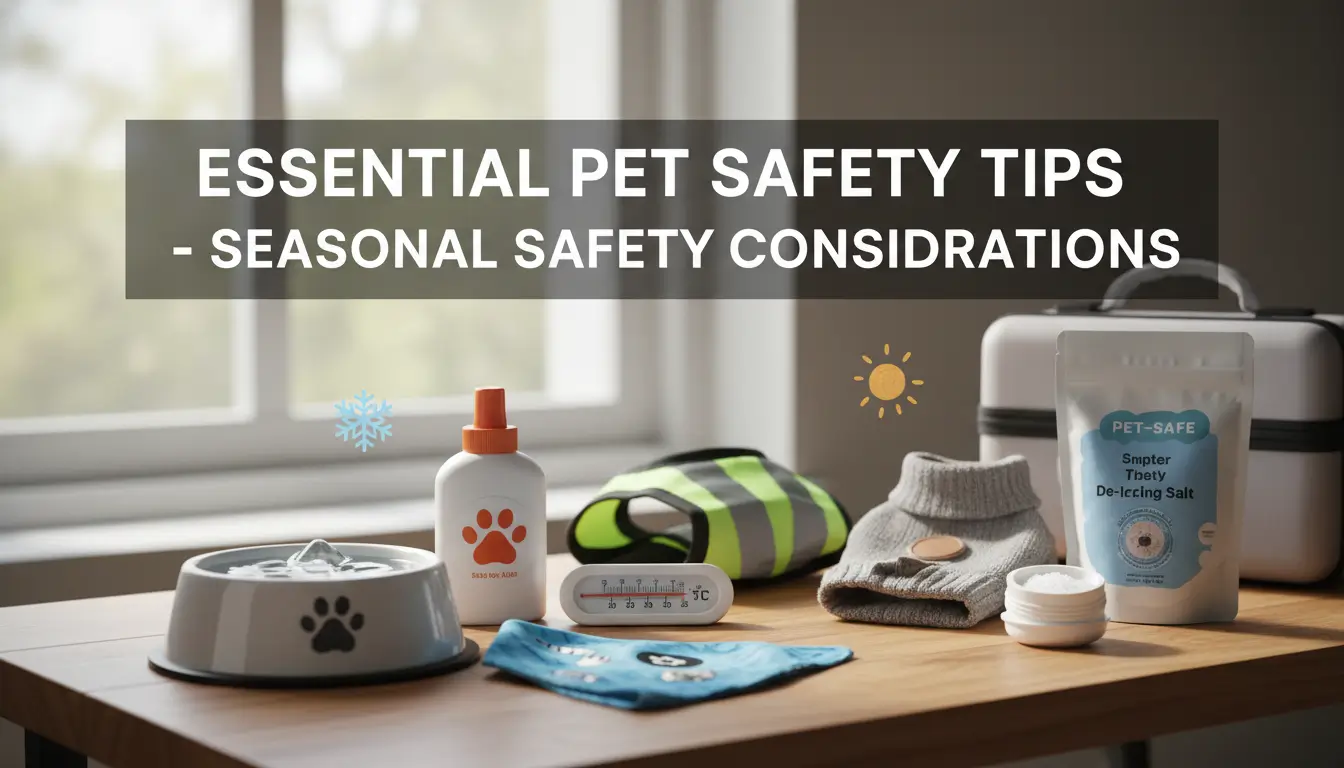Essential Pet Safety Tips Every Owner Needs to Know

Keeping your beloved companion safe is every pet owner’s top priority. Whether you’re a first-time pet parent or have years of experience, understanding essential pet safety protocols can prevent emergencies and ensure your furry friend lives a long, healthy life. From household hazards to seasonal dangers, here’s your comprehensive guide to protecting your pet at home and beyond.
Creating a Safe Home Environment
Your home should be a sanctuary for your pet, but many everyday items can pose serious risks. Start by performing a thorough safety audit of each room. In the kitchen, securely store human foods that are toxic to pets, including chocolate, grapes, onions, garlic, and products containing xylitol (a common sweetener in sugar-free gum and baked goods). Install childproof locks on lower cabinets to prevent curious noses from accessing cleaning supplies, medications, or sharp objects.
The living room and bedroom require attention too. Secure electrical cords with cord concealers or bitter-tasting deterrent sprays to prevent chewing. Keep small objects like coins, batteries, jewelry, and children’s toys out of reach—they’re choking hazards and can cause intestinal blockages if swallowed. Certain houseplants like lilies, philodendrons, and pothos are highly toxic to pets; opt for pet-safe alternatives like spider plants, Boston ferns, or African violets from PetPal’s curated collection.
Don’t forget the bathroom and laundry areas. Keep toilet lids closed to prevent drinking from the bowl (especially dangerous with cleaning chemicals). Store medications, vitamins, and supplements in high cabinets. Laundry pods and fabric softener sheets contain concentrated chemicals that can be fatal if ingested—treat them like any other dangerous substance.
Poison Prevention and First Aid Basics

Despite your best efforts, accidents can happen. Knowing how to recognize poisoning symptoms and respond quickly can save your pet’s life. Common signs include vomiting, diarrhea, excessive drooling, lethargy, seizures, difficulty breathing, and loss of appetite. If you suspect poisoning, contact your veterinarian or the ASPCA Animal Poison Control Center immediately—never wait to see if symptoms improve.
Keep a well-stocked pet first aid kit readily accessible. Essential items include sterile gauze pads, adhesive tape, antiseptic wipes, digital thermometer, tweezers for tick removal, scissors with blunt ends, emergency blanket, and your vet’s contact information. Familiarize yourself with basic emergency procedures: how to perform CPR, control bleeding, and safely transport an injured pet. Remember, first aid is temporary care until professional veterinary treatment is available.
Prevent outdoor poisoning risks by avoiding rodenticides and insecticides in areas accessible to pets. Be cautious with slug bait in gardens, as metaldehyde is highly toxic. After walks, wipe your pet’s paws to remove potential toxins like road salt, lawn chemicals, or antifreeze residue.
Seasonal Safety Considerations

Each season brings unique challenges for pet safety. During summer, never leave pets unattended in vehicles—even with windows cracked, temperatures can rise to fatal levels within minutes. Provide constant access to fresh water, shady resting spots, and limit exercise during peak heat hours (typically 11 AM to 4 PM). Hot pavement can burn paw pads; test surfaces with your hand—if it’s too hot for you, it’s too hot for them.
Winter hazards include antifreeze (sweet-tasting but deadly), ice-melting salts that irritate paws, and hypothermia from prolonged cold exposure. Use pet-safe ice melt products, invest in protective booties for winter walks, and provide a cozy, draft-free sleeping area. Short-haired and smaller breeds may benefit from sweaters or jackets during extreme cold.
Spring and autumn bring their own concerns: increased parasite activity (fleas, ticks, heartworm), seasonal allergies, and toxic spring bulbs like tulips and daffodils. Maintain year-round parasite prevention, watch for allergy symptoms (excessive scratching, ear infections, skin irritation), and research plants before adding them to your garden.
Travel Safety and Emergency Preparedness

Traveling with pets requires careful planning for safety. Use crash-tested carriers or harnesses secured with seat belts—never allow pets to ride unrestrained, as they become projectiles during accidents. For air travel, choose airlines with strong pet safety records and understand crate requirements well in advance. Pack a travel-specific first aid kit with familiar items: your pet’s regular food, medications, comfort items, and recent photos in case you get separated.
Microchipping provides permanent identification if your pet gets lost. Ensure the registration information stays current with your phone number and address. Collars with ID tags should include your mobile number and any relevant medical information (e.g., “Needs daily medication”). For disaster preparedness, identify pet-friendly shelters, boarding facilities, or hotels along evacuation routes. Keep carriers, leashes, and emergency supplies easily accessible.
Building a relationship with a trusted veterinarian is fundamental to pet safety. Schedule annual wellness exams, keep vaccinations current, and discuss breed-specific health concerns. Stay informed about local disease outbreaks (like leptospirosis or canine influenza) and adjust prevention strategies accordingly. Prevention, preparation, and prompt action form the foundation of comprehensive pet safety.
By implementing these safety measures throughout your home and daily routines, you’re creating an environment where your pet can thrive safely. Remember, pet safety is an ongoing commitment—regularly reassess your home, update your emergency plans, and stay informed about new hazards. Your vigilant care ensures your furry family member enjoys the happy, healthy life they deserve.
Disclaimer: This article is for informational purposes only and does not replace professional veterinary advice. Always consult with your veterinarian for specific health concerns or emergency situations.





